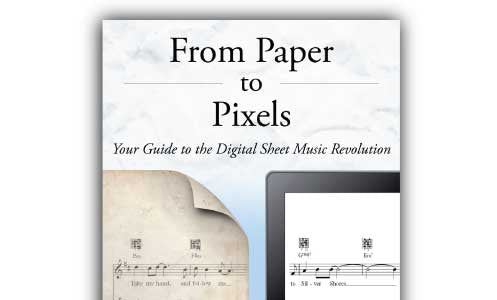What Do I Need to Get Started Reading Sheet Music Digitally?
- by Dave Tamkin
-
Chapter 4 : Paper to Pixels by Hugh Sung Let's get down to business. You are nervous, a little daunted, but nonetheless convinced that it’s time to go digital. Been there, done that, so I think I know what questions you’re probably asking right now. – Which tablet, smart phone or computer is right for me? – How do I get music into my device? – What programs do I...






